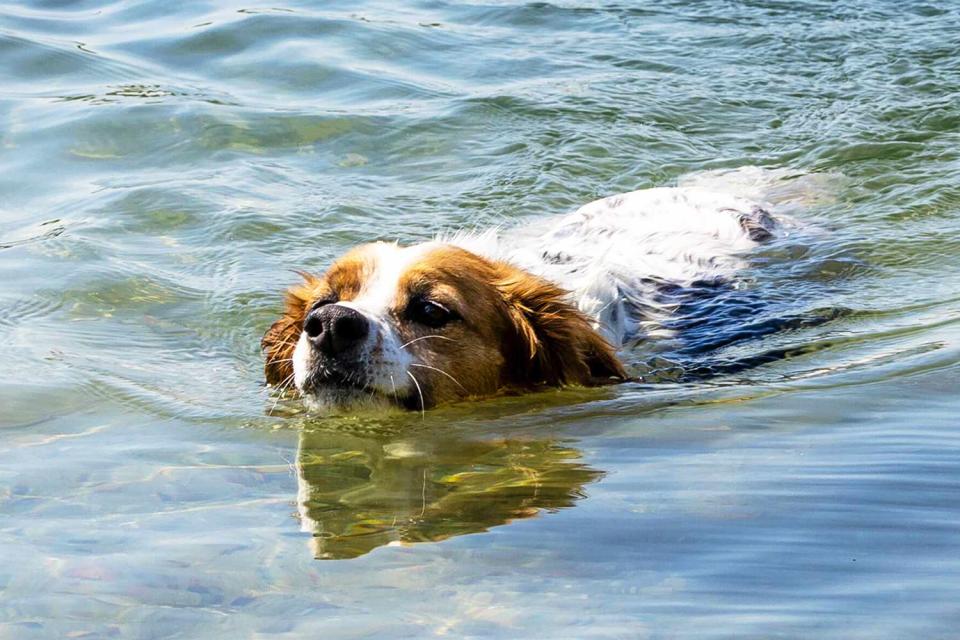Officials Urge Pet Owners to Avoid Texas Lake After Dog Dies Following Swim
A dog died on July 4 after swimming at Lake Travis near Point Venture, Texas

Frank Hammerschmidt/picture alliance/Getty
Stock photo of a dog swimming in a lakeOfficials are advising pet owners to avoid bringing their animals to Lake Travis near Point Venture, Texas, after a dog died following a July 4 swim in the lake.
The Lower Colorado River Authority (LCRA) reported the dog's death on Facebook on July 5 and issued a warning to pet parents regarding Lake Travis, highlighting the potential dangers lake algae poses to animals.
"LCRA has received a report that a dog died after swimming in Lake Travis near Point Venture. Test results from samples taken in the area won't be available for several days. We continue to encourage people to keep pets out of the lake near Point Venture and to avoid contact with all algae, which can produce dangerous cyanotoxins at any time," the agency wrote on social media.
According to the Austin-American Statesman, officials also advised dog owners to avoid all of the Texas Highlands Lakes, a series of interconnected freshwater reservoirs, which includes Lake Travis.

Getty
Lake Travis in TexasRelated: Three Dogs Die of Toxic Algae Poisoning Hours After Playing By North Carolina Pond
The outlet added that most lake algae plants pose no threats to pets or people, but some algae plants that populate lakes, like cyanobacteria or blue-green algae, can lead to death if ingested.
According to the Canine Health Center at Cornell, blue-green algae can significantly affect a dog's liver and nervous system.
Dogs risk getting sick from algae by ingesting it. Dogs often ingest algae by licking themselves after spending time in the water or carrying something with algae in their mouths.
According to the LCRA, symptoms of dangerous algae exposure in dogs include "drooling, rashes, vomiting, diarrhea, weakness, difficulty breathing, loss of energy and appetite, stumbling and falling, foaming at the mouth, seizures, and even death."
Never miss a story — sign up for PEOPLE's free daily newsletter to stay up-to-date on the best of what PEOPLE has to offer, from celebrity news to compelling human interest stories.
Humans "experience eye irritation or rashes" after contact with dangerous types of algae, like cyanobacteria, and can have more severe reactions if the algae is accidentally ingested, per CBS Austin.

Getty
A stock photo of freshwater with algae plantsRelated: Animal Experts Share 14 Must-Know Tips For a Safe, Pet-Friendly Summer
The LCRA encouraged pet owners to avoid areas with algae, rinse their pets off after contact with water that may contain algae, provide pets with clean, fresh drinking water, and go to the vet immediately if their dogs become sick following a lake swim.
Additionally, humans can reduce the growth of dangerous algae in lakes by picking up after their pets and using less lawn fertilizer to "help reduce man-made sources of nutrients" algae plants need to thrive.
For more People news, make sure to sign up for our newsletter!
Read the original article on People.


